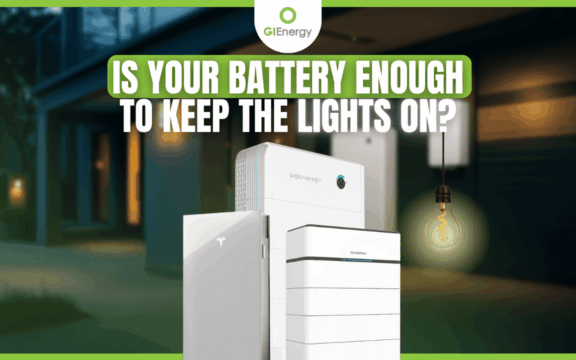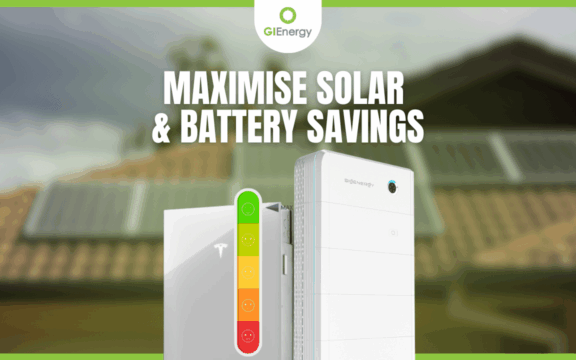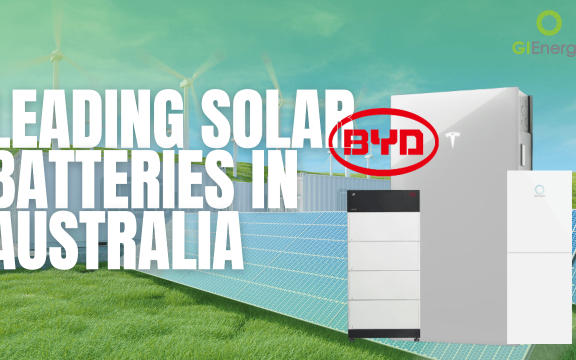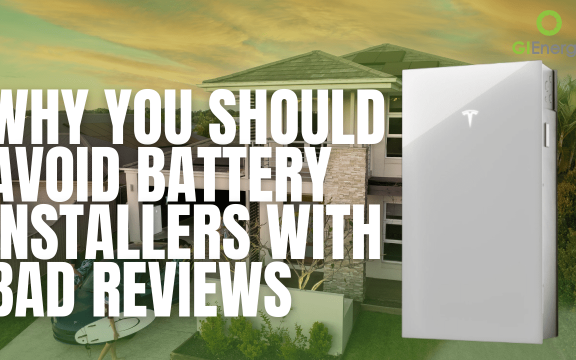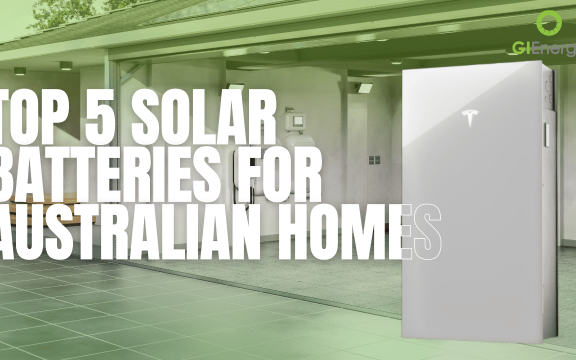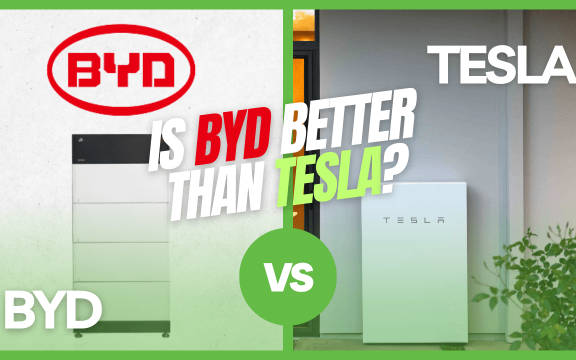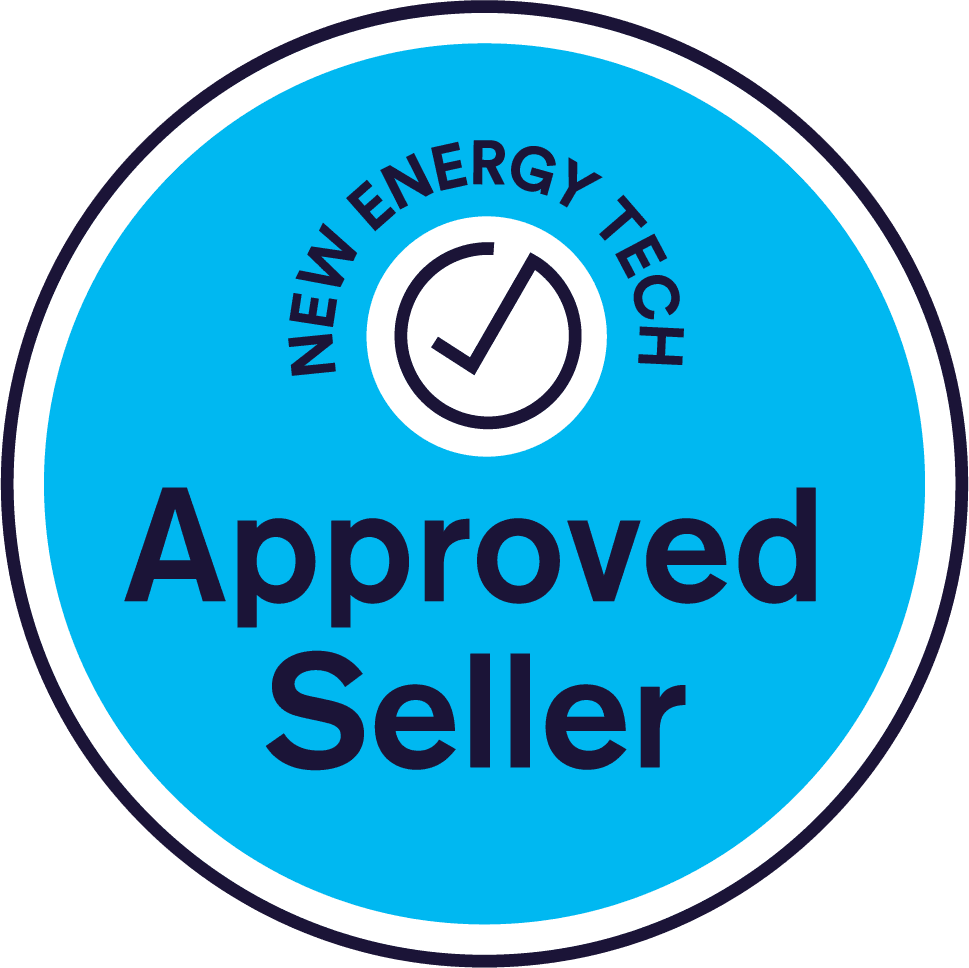Top 10 Things to Know Before Buying a Solar Battery in 2025
Quick Answer:
Before buying a solar battery, understand your household’s energy use, current solar setup, and future needs. Size it correctly, design your backup power, avoid cheap, poor-quality products, choose a good location, and always verify the installer and equipment to maximise ROI.
Why This Matters in 2025
Solar batteries aren’t just an add-on—they’re now central to Australian home energy independence. With government rebates, Virtual Power Plant (VPP) opportunities, and falling hardware costs, the payback period for quality systems has never been better. But the rush has also brought a wave of low-quality products and poor installations.
In this guide, GI Energy’s experts share the 10 most important things you need to know before investing.
1. Understand Your Household Energy Load
No two homes use energy the same way.
-
A family with an electric vehicle (EV) and pool will have very different needs from a couple who work from home and do not have a pool or EV.
-
Seasonal changes also matter—winter heating vs. summer cooling can shift your load dramatically.
Pro Tip: Ask your installer to review at least 12 months of consumption data from your electricity bills or online monitoring before quoting.
2. Review Your Existing Solar Battery Setup
If you already have solar:
-
Check how much you’re exporting vs. importing.
-
Review system age, warranty status, and panel layout.
-
Ensure it meets current Australian standards if you’re adding a battery.
Even if GI Energy installed it years ago, we’ll reassess to make sure it integrates seamlessly.
3. Plan for Future Energy Use
Think about your next 5–10 years:
-
Will you add an EV charger, electrify hot water, or expand air conditioning?
-
Is your household growing or shrinking?
Oversizing slightly now avoids the cost of a second install later—especially since rebates are only available once per system.
4. Understand Your Tariffs & VPP Options

Your tariff type—flat, time-of-use, or controlled load—impacts your battery’s savings potential.
-
Removing controlled load tariffs can allow solar/battery to power your hot water.
-
Joining a Virtual Power Plant (VPP) can offer extra income and smart charging benefits.
Read our guide to Amber Electricity for how dynamic tariffs work with batteries.
5. Size the Solar Battery Correctly
Bigger isn’t always better. You need the right kilowatt-hours (kWh) AND the right charge/discharge rate (kW).
| Battery Size | Typical Use Case | Example Brands | Installed Cost* | Subsidy Eligible? |
|---|---|---|---|---|
| 6–10 kWh | Small–medium homes | BYD, Sigenergy, Fronius Reserva | $8,000–$12,000 | Yes |
| 10–15 kWh | Large homes / EV owners | Fronius, Sungrow SBR, Sigenergy, Tesla, BYD | $12,000–$16,000 | Yes |
| 15–30 kWh | High use | Sigenergy, Sungrow SBH, BYD | $18,000–$30,000 | Yes |
*Costs are indicative.
6. Design Your Backup Power
Not all batteries provide full-home backup. Decide if you want:
-
Essential loads only (fridge, lights, internet)
-
Whole-home backup (includes aircon, hot water, etc.)
Backup ability varies between single-phase and three-phase homes, so choose a product that matches your needs.
7. Don’t Be Cheap on Your Solar Battery
Australia’s ROI for quality solar is world-class, but cheap systems come at a cost:
-
Unknown brands with no track record
-
Poor installation standards
-
Shorter lifespans and higher failure rates
If the price seems too good to be true, it almost certainly is.
8. Don’t Forget the Panels & Inverter
If your panels or inverter aren’t up to standard, you can’t reliably fill your battery.
-
Quality panels from brands like Trina and Sumec Phono Solar and others last 20+ years.
-
The inverter is the brain of the system—don’t cut corners.
9. Choose a Suitable Location
Batteries should be:
-
Out of direct sunlight
-
Protected from weather (garage preferred)
-
Compliant with Australian Standards (e.g. bollards in garages). These standards are very strict and there for safety reasons. Whoever you are speaking to about your installation should be discussing this with you in length.
A poor location can halve the life of your system.
10. Do Your Due Diligence
-
Check your installer’s SAA accreditation
-
Look for at least 5 years in business
-
Read both positive and negative reviews—see how issues were handled
Tip: Always ask for the ABN, insurance certificates, and written warranties before signing.
Key Takeaways
-
Plan for today’s and tomorrow’s energy needs.
-
Choose quality over the lowest price.
-
Ensure your battery, panels, and inverter work together.
-
The right installer is as important as the hardware.
FAQs
1. How much does a solar battery cost in Australia in 2025?
Most quality systems range from $8,000 to $36,000 after rebates, depending on size and brand. Keep in mind some people need a very small battery and some have much higher energy needs which is why this range is so vast.
2. How long will a solar battery last?
A well-installed, quality battery should last 10–15 years with minimal degradation.
3. Are solar batteries worth it without a VPP?
Yes, especially if you use a lot of energy at night. VPPs can further improve returns.
4. Can I add a battery to my existing solar system?
In most cases, yes—though older systems may require upgrades to meet standards.
5. How do I know what battery size I need?
Analyse your usage patterns over a year. A good installer will match kWh capacity and charge/discharge rates to your needs.
Internal Resource:
Pair this guide with our Best Solar Battery in 2025 article for specific product recommendations.
About GI Energy
GI Energy is an award-winning Australian solar and battery installation company with over a decade of experience. Known for ethical practices, high-performance systems, and exceptional after-install support, GI Energy is trusted by homeowners, councils, schools, and major businesses nationwide.



